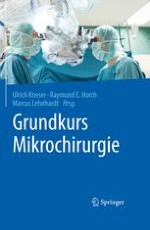2016 | OriginalPaper | Buchkapitel
16. Komplikationsmanagement bei mikrochirurgischen Lappenplastiken
verfasst von : Dr. L. Harhaus, Dr. C. Hirche, Prof. Dr. med. Dr. h.c. U. Kneser
Erschienen in: Grundkurs Mikrochirurgie
Verlag: Springer Berlin Heidelberg











